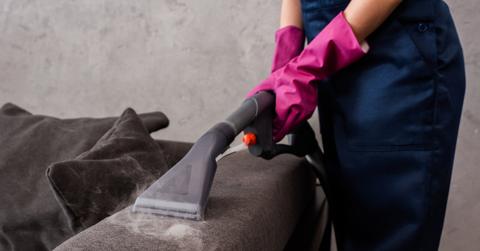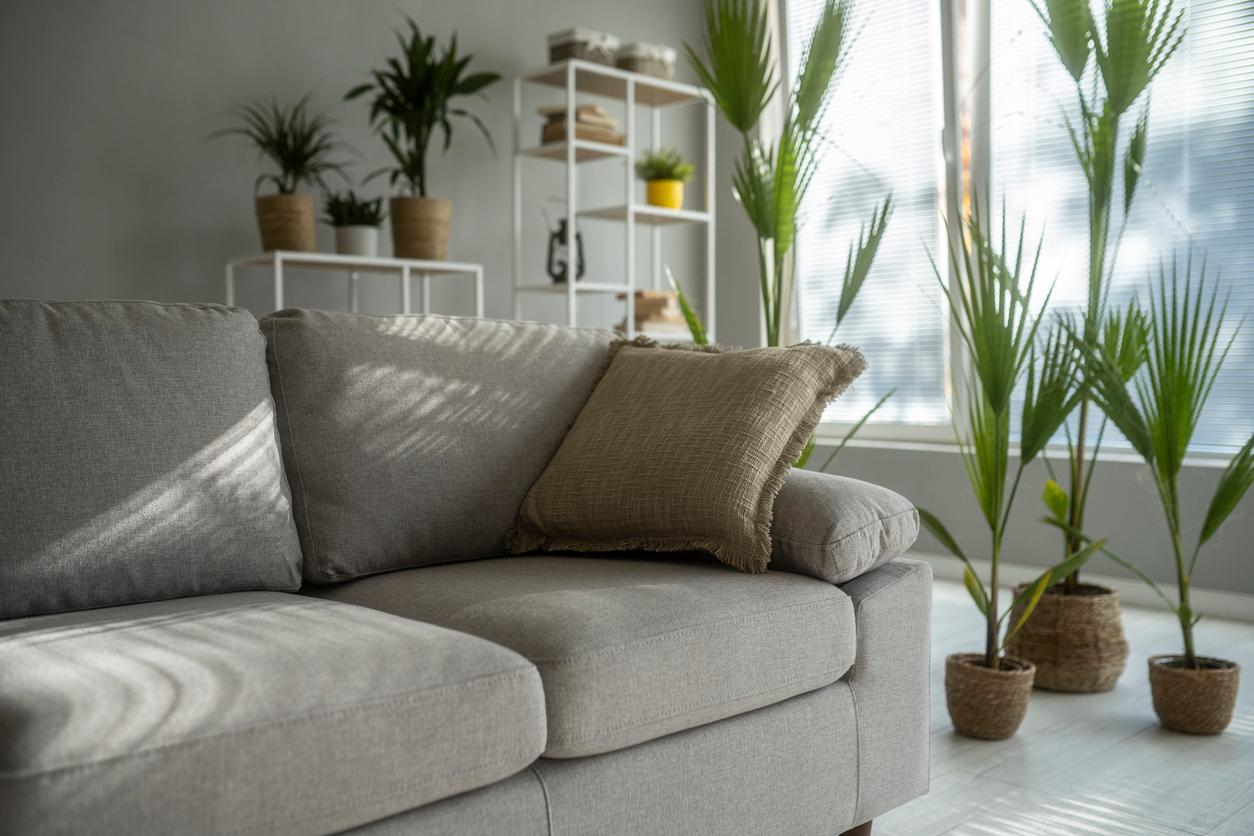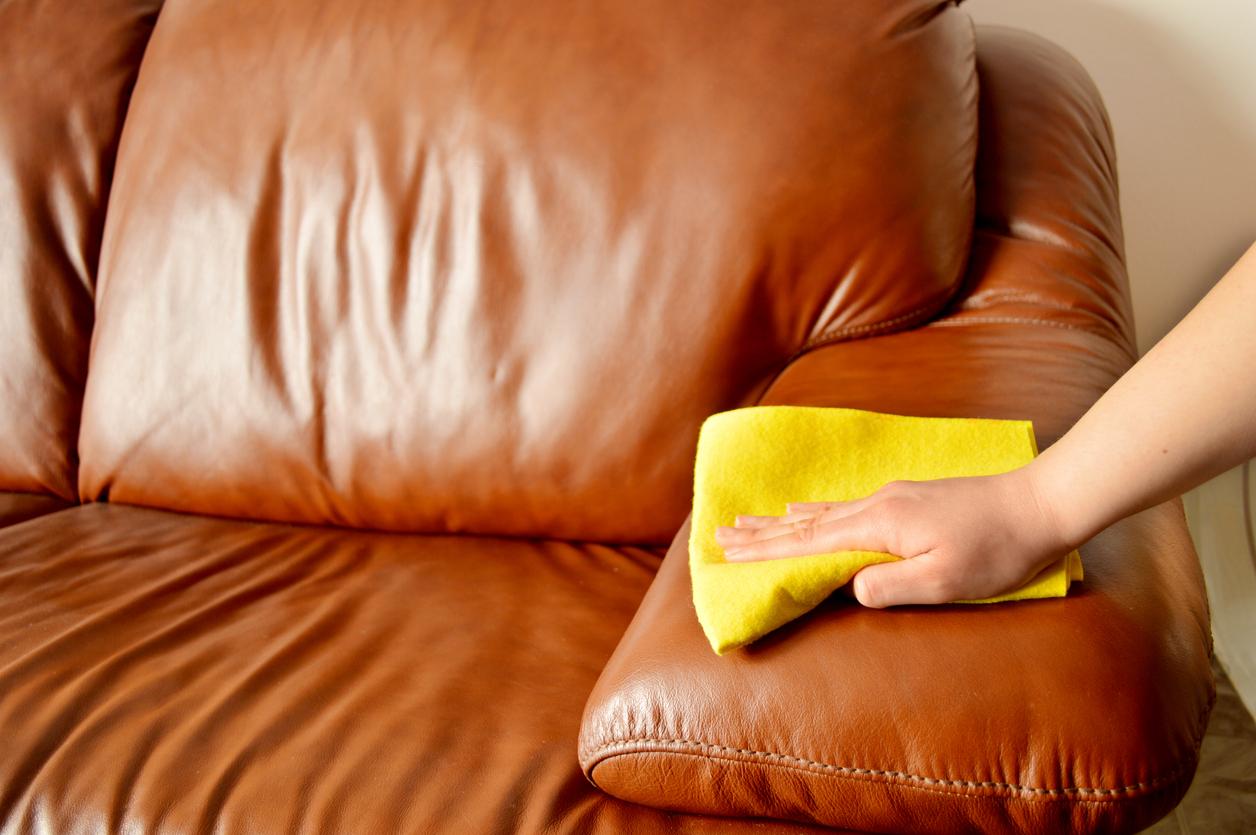Is Your Furniture Stinky? Here’s How to Clean a Couch Based on the Material
Learning how to properly clean your furniture is a great way to keep everything in good shape and improve the overall hygiene of your space.
Published July 24 2024, 3:19 p.m. ET

Sustainability isn’t just about finding the most eco-friendly dupes on the market, it’s also about taking care of what you already have to prevent overconsumption and waste. When you learn how to look after the items in your home, they tend to retain their value and last longer.
Arguably one of the most important furniture pieces in many homes are couches. To learn how to clean a couch, stick around. Whether it’s made of cotton, chenille, velvet, microfiber, or leather, we’ve got you covered.
How to clean a cotton couch:

If you have a cloth couch made of cotton, you know that the cleaning process can be a little tricky. For the best results, it’s important to add a few extra steps to your normal routine.
Begin by brushing the couch — you can use a towel, a tough-bristled brush, or whatever you have available to get the job done, according to Molly Maid. This will help loosen old stains.
Next, sprinkle baking soda onto the entire couch and let it set for 20 minutes to an hour. It might just seem like a basic household item, but this versatile ingredient can neutralize stains and odors. Once some time has passed, vacuum the baking soda — if your sofa looks and smells sparkling clean, then you can stop here.
Depending on the furniture's level of cleanliness, you might need to go a bit further. For more extreme stains, you can try making your own cleaning solution. To do this, mix a small amount of dish soap and white vinegar with water in a spray bottle. Top the solution off with a teaspoon of baking soda.
Spray the cleaning solution onto a cloth and wipe down your couch thoroughly. Let the sofa dry for a few hours before using it again.
How to clean a chenille couch:

Thanks to their interesting texture, caring for chenille couches seems complicated. This yarn-like fabric is very unique, but as long as you complete some simple maintenance tasks every week, it’s pretty easy to take care of.
To keep a chenille sofa in good condition, gently brush and vacuum it every week. For stains, spot treating is the best strategy, according to The Fabric Outlet. Use a dry cloth to blot the stain first, and then move on to a solvent-based cleaner — don’t use too much product, as this can make matters worse. Continue to blot the stained area and then let it dry.
How to clean a velvet couch:

Velvet couches can be high-maintenance — they tend to require a lot of meticulous care. However, like most sofas, vacuuming frequently can go a long way.
To treat a fresh stain, use a paper towel to soak up as much moisture as possible and to lift the substance out of the material. From there, you can create a solution with a few drops of dish soap with warm water and dab it on the affected area.
How to clean a leather couch:

There are many ways to clean a leather couch, whether it’s real or faux. Both can be cleaned using a mixture of mild dish soap and water, baking soda, and distilled white vinegar, according to House Digest.
If you want to try a different cleaning solution that’s more specific to real leather, you can add an olive oil and vinegar mixture to a spray bottle, according to HGTV. From there, you can apply it to the couch and buff each area with a cloth.
How to clean a microfiber couch:

Need to clean your microfiber couch? Rubbing alcohol might be the solution. However, before you give this method a try, double-check the care instructions to ensure that a solvent-based cleaner is acceptable.
Begin by spraying each section of the sofa with rubbing alcohol. Next, use a sponge to scrub the fabric, wait for it to dry, and then use a dry brush (moving in a circular motion) to help fluff it back to its original condition.